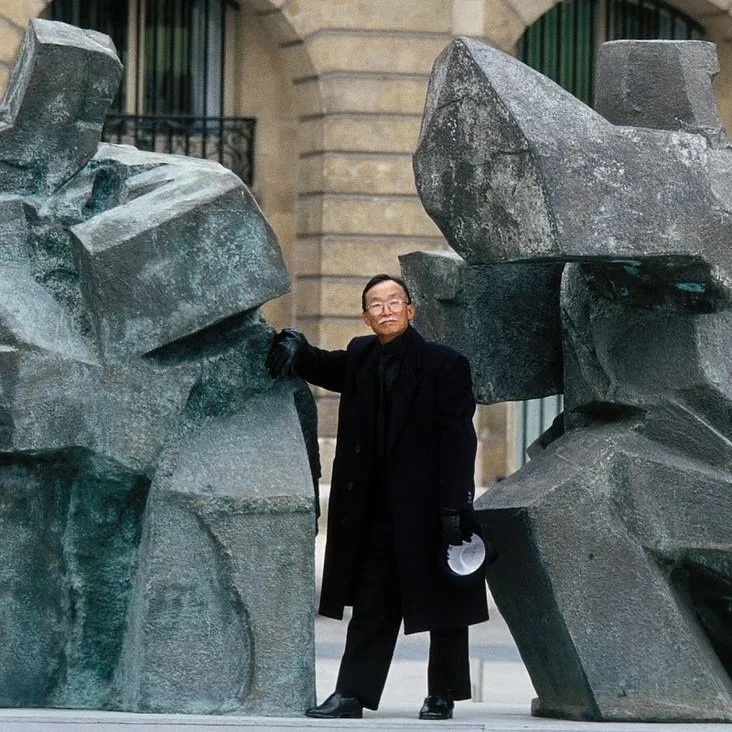Capturing Time and Chinese Tradition in a Contemporary Way 以當代方式捕捉時間和中華傳統 : Amanyangyun at Every Season 養雲安縵
With Kerry Hill Architects, Tanuj Goenka, Tim Bradley, Isabelle Vergnaud
Translated by Jane Li · Edited by Yasmin Lai
Photography: courtesy of Kerry Hill architects, Li Jie, Lian Xiao Ou, Sui Sicong, GuYin and Kenrolzu
As featured in Edition No. 6 of Fete Chinoise Magazine: Time + Tempo
Kerry Hill Architects joined the conversation a decade ago. They began the process of masterplanning and arranging building volumes to achieve an appropriate scale and density for Amanyangyun. But their biggest challenge was working with a site that was flat and empty. Usually, there is a landmark of sorts that provides inspiration to architects. But this was a tabula rasa — a blank slate — meaning they were required to start from scratch. So they drew inspiration from historical Chinese urban planning principles of scale, hierarchy, and composition of spaces to incorporate the 10,000 camphor trees and 50 historical buildings.
在馬大東先生的指導下,在上海市外的小區重新種植了10,000棵樟樹並重建了50座歷史建築。他的目的是什麼?是為了阻止這些文化文物和古蹟永遠消逝。這位商人尋求了中國安縵集團(Aman China)作為運營商,在多年後,養雲安縵(Amanyangyun)也就誕生了。十年前,Kerry Hill設計(Kerry Hill Architects (KHA))加入了這計劃。他們最大的挑戰是在一個平坦而空曠的場地上工作。通常場地都有一個地標,可以為建築師提供靈感。但這是一塊白板,意味著他們必須從零開始。因此,他們從歷史悠久的城市規劃原則中汲取了靈感,並以當代方式創建了富有中國文化氣色的“居住博物館”。
A Balance between New and Old
To understand the function and lived experiences of the historical buildings transported from Jiangxi, the team visited similar villages to gather a deeper understanding of how they were inhabited. “Each house is different in plan and section. On one hand, we wanted it to be fit for purpose as a hotel room without ruining the traditional character. On the other, we wanted to balance the contemporary elements in harmony with the traditional character. Both become equally important,” says Tanuj Goenka, Director at KHA. This treatment of the Jiangxi houses has been celebrated and the space sometimes referred to as a “living museum” of Chinese culture.
為更了解從江西運來的歷史建築中的歷史背景,工作組訪問了類似的村莊,以加深對它們居住方式的認識。“每所房子的平面圖和截面都不同。一方面,我們希望它適合用作酒店房間而又不破壞傳統特色。另一方面,我們希望在現代元素與傳統特質之間取得平衡。兩者都是同等重要的。”KHA董事Tanuj Goenka說道。
To bring the old and new together into connection was of major significance to the team. Tim Bradley, Project Architect, comments that this connection goes beyond having contemporary elements incorporated into the old houses: “A deeper connection found by recognizing the materiality of the houses, how space is organized, and how daylight streams into the courtyard. This light filtered through different screens makes the points of connection clear. It is not a literal copying but taking experiential strands from the old and putting them into the architecture.” The contemporary approach ensures that these structures convey historical reverence while working within the contemporary way of life.The new and old embrace each other instead of being separated. And this is the exact feeling one experiences when they study the carefully-designed spaces inside the villa. The Nan Shufang Scholar Pavilion incorporates traditional precious wood shelving and large calligraphy tables while inviting guests to immerse themselves in the array of books and art available. Serving as the cultural hub of the project, the space is open and visible from the garden with a large King Camphor tree at the heart of the hotel.
sponsored by piaget.
對團隊而言,將新舊事物相連在一起,具有重大意義。高級室內設計師Tim Bradley表示,這種連結不僅僅將現代元素融入到古宅中:“當人意識到房子的重要性,空間的組織以及日光流進庭院的路徑,會發現了更深的聯繫。光線通過不同屏幕的過濾使連接點清晰可見。它再不是紙上談兵,而是將舊有的體驗帶入了建築中。”當代方法可確保這些歷史文物在現代生活方式下受到應有的尊重。新舊融匯,而不是分割。這就是任何人細賞別墅內部精心設計的空間後所確切感受到的。楠書房閱讀館結合了傳統的珍貴木材架子和大型繪畫桌,同時邀請客人沉浸在各種書籍和藝術品中。作為項目的文化中心,該空間是開放的,從花園中可以看到,而花園位於別墅的中心,內有一棵大栳樟樹。
Preservation and Exclusivity of Design 設計的保存性和獨特性
To preserve antique buildings from the Ming and Qing dynasties was the opportunity of a lifetime. The team recalls the opportunity to work with talented local craftsmen and carpenters. While each project has a special place, KHA aims to slow things down in our fast paced world to develop full scale prototypes. At Amanyangyun, the team was afforded a large amount of time during their six-year journey. Interior designer Isabelle Vergnaud shares how that dedicated time was “the reason we could work so closely to develop custom designed furniture and artifacts. It allowed for silk paintings to be completed and carpets (with many prototypes) to be woven.” Everything from the hardware to the software of the antique villas is related to Chinese culture.
雲的主題在養雲安縵套房的設計中扮演著重要角色。KHA相信雲的主題是串聯不同朝代的元素,其意思包含學習和智慧,因此非常相關。當太陽照耀著帶有幾何圖案的竹子結構時,中國雲朵的傳統表現被呼應在地板上。這被譽為大膽的當代風格。
In fact, Mr. Ma owns a furniture business which supplied a few Ming dynasty furniture reproductions. The craftsmanship was well-supervised and materials were carefully chosen.
The company’s reproductions of such traditional pieces have been exhibited in museums in Beijing as well. The fact that these pieces are used in Amanyangyun together with contemporary furniture aligns perfectly with the vision for the magnificent villas.
The motif of the cloud is also significant in the design of Amanyangyun’s guest rooms. The cloud motif is an element KHA believes is found through different dynasties and the meaning behind it encompasses learning and wisdom, which makes it very relevant. When the sun shines through the timber or bronze geometrical screens, an abstract illusion of clouds covers the floor through the form of shadows.
即使是最小的細節也沒有被忽略。房中所有物件的設計,都隱含著將中國文化隔入期中的憧憬。除了關注屏風之外,還注意到房間的扶手椅和門把手。這源於對設計的獨特性的信念。的確,甚至在客房牆壁上展示的竹製藝術品都是與工匠共同創造的。
A moment where tradition meets the contemporary.
Even the smallest details were not forgotten. All pieces inside the rooms were designed with the vision of weaving Chinese culture into the design. Interpreting not only the screens, where sunlight would come into the room, attention was given to the armchairs and doorknobs in the room. This stems from the belief in the exclusivity of design. Indeed, even the bamboo art displayed along the walls of the guestrooms were created in partnership with craftsmen.
As the team spoke excitedly about the project, all agreed that: “Chinese culture is not something you absorb through a manual. It is a transmission of emotions. It is not a remaking of what is found in books.” Indeed, this philosophy is at the core of Chinese culture where it is more about the transcendental message than simply physical phenomenon. From poets to painters, their works were a way to communicate with an existing cultural canon of works and ideas and to transmit their thoughts to their audience. To learn that the architecture firm fully translated this through space is meaningful.
當團隊對這個項目興奮地談論時,所有人都同意:“中國文化不是您透過說明書就能吸收到的東西。這是一個情感的傳遞。它不是書籍內容的改編。”這種哲學是中國文化的核心,它更多是關於超凡脫俗的信息,而不僅僅是物理現象。從詩人到畫家,他們的作品都是與現有的作品和思想文化經典進行交流並將思想傳達給觀眾的一種方式。得知建築商通過空間將其完全演譯出來是有深長意義的。
Plan Your Visitin Every Season 計劃每個季節的拜訪
It is recommended that visitors stay at Amanyangyun for at least 3 to 4 days. The location is just 20 miles from Shanghai, although the distance warrants a full stay. Experiencing the property and its variety of spaces will take time since there are distinct landscapes and different cuisines as you wander through the spectacular resort. The cultural programming is something not to be missed — a component Mr. Ma felt strongly about.
建議遊客在養雲安縵停留至少3-4天。儘管只位於距離上海市20英里外,這個距離足以在別墅住宿一晚。漫步在壯觀的別墅中時,由於有獨特的景觀和不同的美食,因此要體驗建設及其各種空間將花費一些時間。文化節目是不容錯過的—馬先生強烈地推薦。
The designers share that each season at Amanyangyun comes with a unique outlook on the landscape. It was designed so that the seasons dialogue with nature. Although a very subtle part of the project, returning a few times a year or every few years will look different as nature changes through time. Not only will natural landscape change its form, but also the cuisines that are offered as well. We hope readers have more than one opportunity to experience this living museum and culturally-inspirational villas just outside of Shanghai through the years. How magical to have a space so aware of temporal nuances in more ways than one.
設計師們分享說,養雲安縵的每個季節都有獨特的景觀視野。它的設計使季節與自然呼應。雖然是這個項目的微妙之處,但隨著時間,大自然不斷地變化,每年或每幾年回來幾次看起來是會有所不同。不僅自然景觀會改變其形態,所提供的美食也會因季節有所不同。我們期望讀者來年有不止一個機會來體驗這座位於上海市郊外的居住博物館和具有文化靈感的別墅。一個空間能用多於一種形式去呈現時間上的細微差別,是多麼的神奇。















The Vancouver Silent Auction site is now live! Explore various categories showcasing generous donations from our valued donors. Engage in bidding for your favourite items, supporting a great cause, and discovering an array of distinctive goods and exclusive experiences, ranging from home decor to fashionable apparel and accessories